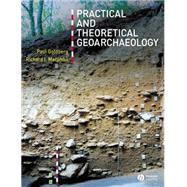
What is included with this book?
Richard I. Macphail is a Senior Research Fellow atUniversity College London, investigating archaeological sediments, soils, and occupation deposits across Europe and the USA. He was a researcher for English Heritage for 20 years, and is currently a Research Fellow at Boston University and was professor invité at Université de Tours.
| Preface | ix | ||||
| Acknowledgments | xi | ||||
| Introduction | 1 | (6) | |||
| Part I Regional scale geoarchaeology | 7 | (182) | |||
|
11 | (17) | |||
|
11 | (1) | |||
|
11 | (16) | |||
|
27 | (1) | |||
|
28 | (14) | |||
|
28 | (1) | |||
|
28 | (10) | |||
|
38 | (2) | |||
|
40 | (1) | |||
|
40 | (1) | |||
|
41 | (1) | |||
|
33 | (9) | |||
|
42 | (30) | |||
|
42 | (9) | |||
|
51 | (1) | |||
|
52 | (12) | |||
|
64 | (7) | |||
|
71 | (1) | |||
|
43 | (10) | |||
|
53 | (19) | |||
|
72 | (13) | |||
|
72 | (1) | |||
|
73 | (3) | |||
|
76 | (8) | |||
|
84 | (1) | |||
|
85 | (34) | |||
|
85 | (1) | |||
|
85 | (4) | |||
|
89 | (2) | |||
|
91 | (8) | |||
|
99 | (13) | |||
|
112 | (5) | |||
|
117 | (2) | |||
|
102 | (17) | |||
|
119 | (32) | |||
|
119 | (1) | |||
|
119 | (18) | |||
|
137 | (3) | |||
|
140 | (1) | |||
|
140 | (9) | |||
|
149 | (2) | |||
|
123 | (28) | |||
|
151 | (18) | |||
|
151 | (1) | |||
|
151 | (17) | |||
|
168 | (1) | |||
|
152 | (11) | |||
|
163 | (6) | |||
|
169 | (20) | |||
|
169 | (1) | |||
|
169 | (5) | |||
|
174 | (12) | |||
|
186 | (1) | |||
|
187 | (6) | |||
|
180 | (9) | |||
| Part II Nontraditional geoarchaeological approaches | 189 | (106) | |||
|
193 | (18) | |||
|
193 | (1) | |||
|
193 | (6) | |||
|
199 | (3) | |||
|
202 | (5) | |||
|
207 | (3) | |||
|
210 | (1) | |||
|
204 | (7) | |||
|
211 | (14) | |||
|
211 | (1) | |||
|
212 | (4) | |||
|
216 | (1) | |||
|
217 | (1) | |||
|
218 | (1) | |||
|
219 | (2) | |||
|
221 | (1) | |||
|
221 | (3) | |||
|
224 | (1) | |||
|
225 | (22) | |||
|
225 | (1) | |||
|
225 | (2) | |||
|
227 | (8) | |||
|
235 | (4) | |||
|
239 | (5) | |||
|
244 | (2) | |||
|
246 | (1) | |||
|
227 | (15) | |||
|
242 | (5) | |||
|
247 | (21) | |||
|
247 | (1) | |||
|
248 | (6) | |||
|
254 | (13) | |||
|
267 | (1) | |||
|
268 | (18) | |||
|
268 | (1) | |||
|
268 | (15) | |||
|
283 | (2) | |||
|
285 | (1) | |||
|
269 | (2) | |||
|
271 | (15) | |||
|
286 | (9) | |||
|
286 | (1) | |||
|
286 | (3) | |||
|
289 | (1) | |||
|
289 | (2) | |||
|
291 | (1) | |||
|
292 | (3) | |||
| Part III Field and laboratory methods, data, and reporting | 295 | (96) | |||
|
299 | (36) | |||
|
299 | (1) | |||
|
299 | (13) | |||
|
312 | (4) | |||
|
316 | (5) | |||
|
321 | (7) | |||
|
328 | (5) | |||
|
333 | (1) | |||
|
334 | (1) | |||
|
335 | (33) | |||
|
335 | (1) | |||
|
336 | (16) | |||
|
352 | (2) | |||
|
354 | (7) | |||
|
361 | (1) | |||
|
362 | (5) | |||
|
367 | (1) | |||
|
368 | (20) | |||
|
368 | (1) | |||
|
368 | (6) | |||
|
374 | (1) | |||
|
374 | (6) | |||
|
380 | (7) | |||
|
387 | (1) | |||
|
369 | (1) | |||
|
370 | (18) | |||
|
388 | (3) | |||
| Appendices | 391 | (13) | |||
| Bibliography | 404 | (39) | |||
| Index | 443 |
The New copy of this book will include any supplemental materials advertised. Please check the title of the book to determine if it should include any access cards, study guides, lab manuals, CDs, etc.
The Used, Rental and eBook copies of this book are not guaranteed to include any supplemental materials. Typically, only the book itself is included. This is true even if the title states it includes any access cards, study guides, lab manuals, CDs, etc.